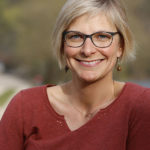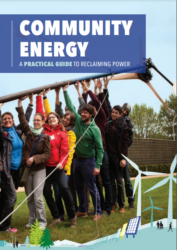Getting a grip on the grid: Energy communities in Germany and France
Academic insights on the challenges and opportunities for energy communities to access the grid
We know the immense potential that community energy has for delivering a just transition. That is why we regularly share good examples and encourage municipalities and other local actors to support citizen energy or to set up their own community. But let’s be realistic, too: energy communities still face many barriers and access to the grid is one of them. High connection prices, complex procedures or baffling technical requirements can be daunting for non-professional players and hinder or downscale community projects. Our intern, Andrea Wainer, recently finished her thesis as part of the Environment and Resource management master’s programme of the VU University in Amsterdam. In this article we share some of her insights on the challenges and opportunities that energy communities have in accessing the grid in France and Germany.
A contrasting set-up: two countries, two ways of managing the grid
France and Germany are two countries with contrasting governance models of the distribution network. In France, one national company manages 95% of the country’s distribution grids while in Germany, about 900 companies operate locally. Let’s see some of the advantages and drawbacks of each system:
Most often, community energy initiatives are connected to distribution grids, which are managed locally by Distribution System Operators (DSOs). According to Wainer’s survey, it is not rare that project holders report a difficult relationship with the DSO.
The study emphasizes the enabling power of national regulations such as the priority for renewable energy power plants to be connected to the grid. Such regulation already exists in Germany, but not yet in France. In both countries the same connection rules apply to all renewable power plants with no particular support for renewable producers with a social agenda.
Another important factor is the connection price. While French project holders must bear the costs of the grid optimization needed to connect new power plants, in Germany these costs are mostly paid by the DSOs – and eventually passed on to the consumers via electricity bills. A number of French players consider the German solution to be a source of inequalities as those not participating in community energy projects still have to pay for grid improvements.
Connection rules and prices are set nationally: What can municipalities do?
Energy distribution is a regulated activity, i.e. priority to access the grid, connection rules and prices are set and enforced at the national level by the regulatory authorities. This does not mean city administrations cannot help community energy organisations feed their electricity into the grid. This is even easier when cities own and manage their own distribution network or when a municipal company operates the distribution system. In Germany this is possible: municipal utilities (“Stadtwerke”) have a long history of local resource management (700 out of the 900 German DSOs are Stadtwerke) and the country has seen a remunicipalisation movement gain momentum in the past few years. That is not the case on the other side of the Rhine: although French cities are the official owners of the local grids, the concession of 95% of the distribution network is by law assigned to a sole DSO.
Some may argue that too many small distributors operating simultaneously may lack technical capacity or the ability to deploy national strategies, such as the rollout of smart meters, which can prevent costly expansions of the grid by enabling demand-side management solutions.
However, even when municipalities are not entitled to manage their distribution network, they can successfully support energy communities (see our guide!) with the connection process: In France, several cities and associations of energy communities have implemented cooperation agreements with the national DSO. These agreements allow for dialogue between DSOs, municipalities and energy communities about connection issues. All the interviewees of the study agree that this type of cooperation has proved to be very useful.
Moreover, in many EU countries, new power plants are connected according to the “first come, first served” principle, resulting in random and possibly unfair connection prices. This could be, at least partly, solved if planning schemes were established to forecast and mutualize grid optimization costs among project holders. The EU Directive on common rules for the internal electricity market (2019) stipulates that Member States should introduce distribution network development plans. Consequently, France has introduced a biennial planning obligation for DSOs, not yet transposed in implementing decrees.
Cities connecting the dots for optimised and fair access
Andrea Wainer suggests that cities could play a “hub” role in grid optimization planning by setting up ‘local planning bodies’. Their role would be to involve citizens and their local DSO in identifying suitable locations for new power plants, and what grid optimizations are required to connect them. One major obstacle to this proposal is that DSOs have a non-discrimination obligation and are bound by “business secrecy”, which prevent them from revealing potentially competing projects. Similarly, counselling activities could be seen by the regulatory authorities as a violation of the unbundling obligation. Indeed, one of the principles of the EU energy market is to separate electricity distribution from competitive activities. This obligation aims to ensure non-discriminatory access to the grid. And as regulated companies, DSOs are not allowed to perform competitive activities such as energy production or aggregation.
Finally, it is also suggested that cities could look closer at the impact of grid financing mechanisms on connection costs while monitoring transposition of EU directives under the Fit for 55 package in their country. Municipalities are in close contact with energy communities and know the difficulties citizens face with their energy bills. Using this experience, they could draft recommendations for financing the connection costs. Financing alternatives would include revenues other than citizens’ contributions and they would allow energy communities to connect without placing an extra burden on those who cannot participate in them.
One thing is clear: Connection issues are highly dependent on and intertwined with the broader national strategies and regulations for renewable energy. They are conditioned by financial incentives, by the way the grid is financed in each country, and finally, by the European rules of the common electricity market. More and more policy-makers recognize the potential of energy communities to contribute to the energy transition and to provide social and economic benefits. Grid access rules and financing mechanisms should include these new players in the fairest way possible and the latest progress brought about by EU legislation on this subject points to the right direction.
Any reaction or suggestion?
- For additional input to this debate, please get in touch with us.
- If you wish to read the whole thesis, please contact Andrea Wainer directly.


